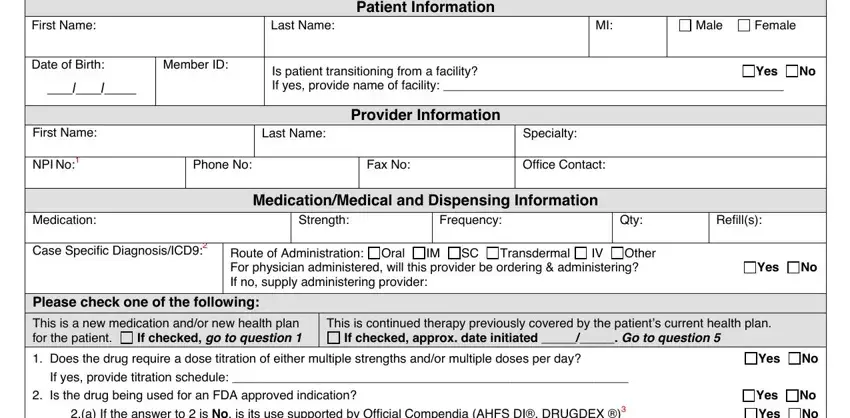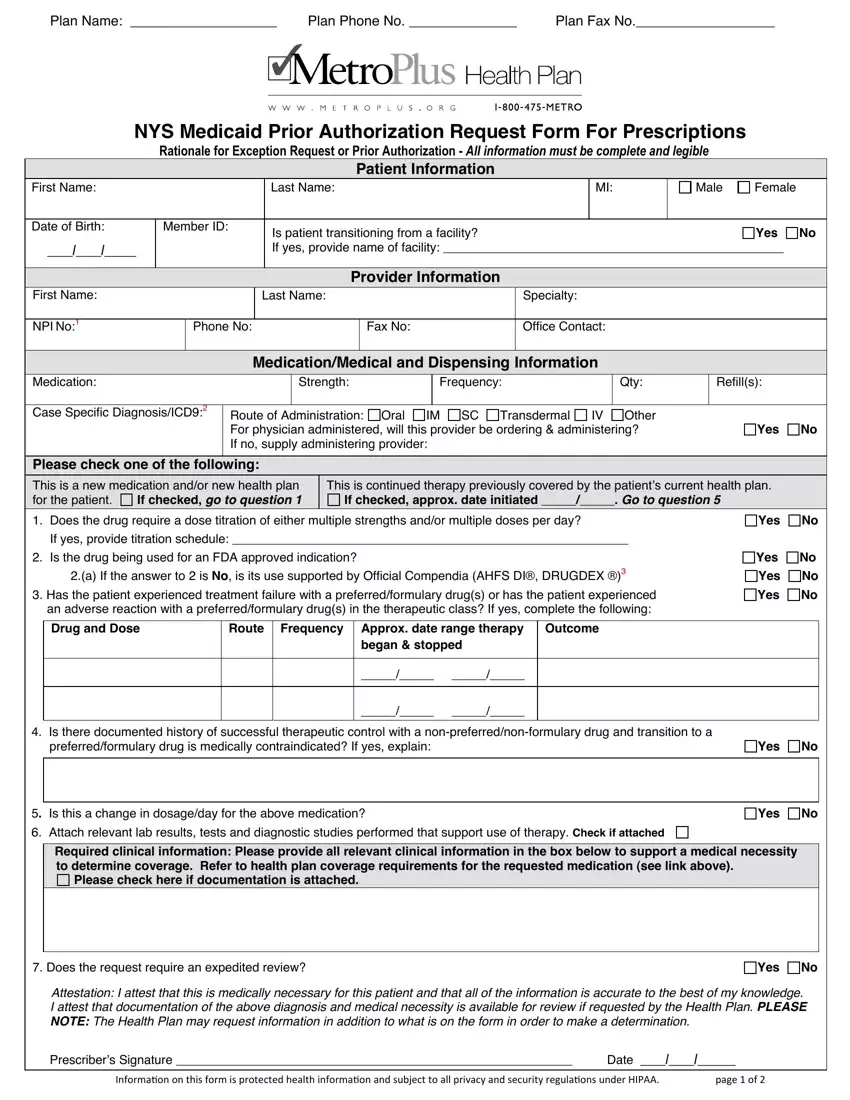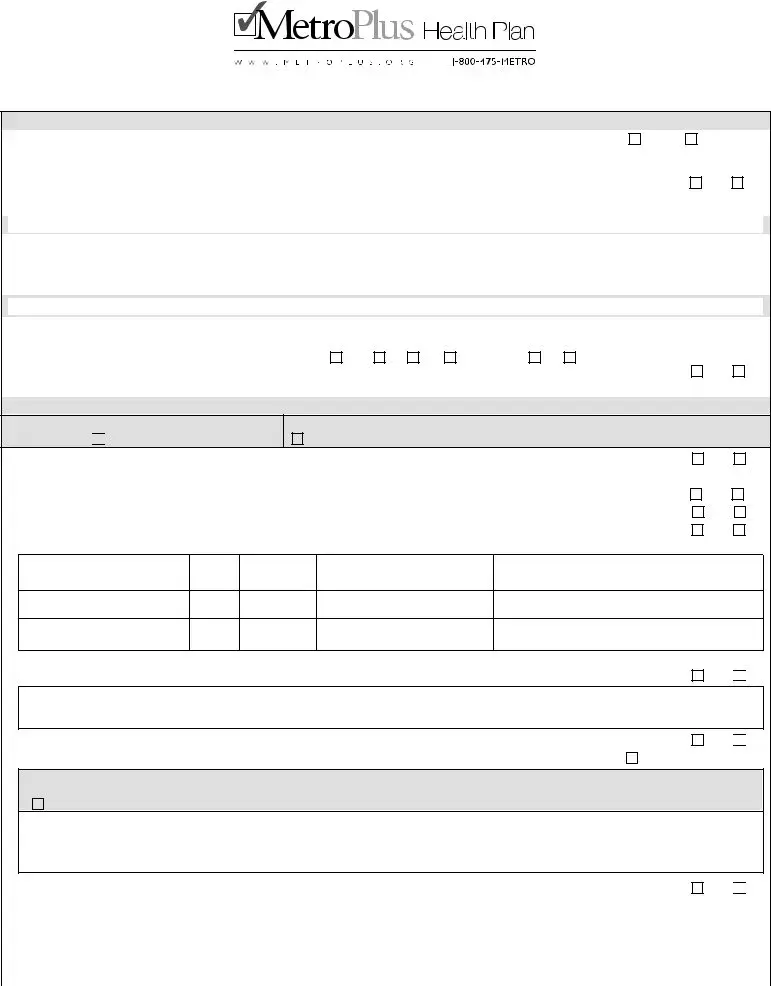Upon our review of all required information, you will be contacted by the health plan.
When providing required clinical information, the following elements should be considered within the rationale to support your medical necessity request:
OHeight/Weight
OCompound ingredients
OSpecific dosage form consideration
ODrug or Other Related Allergies
Please consider providing the following information as applicable & when available:
OHealthcare Common Procedure Coding System (HCPCS) 4
OTransition of Care (contact, phone number, length of stay)
OPatient information (address, phone number)
OProvider information (address, direct electronic contact information, e-mail, etc.)
This form must be signed by the prescriber but can also be completed by the prescriber or his/her authorized agent. The completed fax form and any supporting documents must be faxed to the proper health plan.
Helpful Definitions
1NPI: A national provider identifier (NPI) is a unique ten-digit identification number required by HIPAA for all health care providers in the United States. http://www.cms.gov/Regulations-and-Guidance/HIPAA-Administrative- Simplification/NationalProvIdentStand/index.html?redirect=/nationalprovidentstand/
2ICD-9: The International Classification of Diseases (ICD) is designed to promote international comparability in the collection, processing, classification, and presentation of mortality statistics http://www.cdc.gov/nchs/icd.htm
3AHFS Drug Information® (AHFS DI®) provides evidence-based evaluation of pertinent clinical data concerning drugs, with a focus on assessing the advantages and disadvantages of various therapies, including interpretation of various claims of drug efficacy. http://www.ahfsdruginformation.com/ DRUGDEX ® System within the Micomedex product which provides peer-reviewed, evidence-based drug information including investigational & non prescription drugs. http://www.micromedex.com/
4The HCPCS is divided into two principal subsystems, referred to as level I and level II of the HCPCS:
OLevel I of the HCPCS is comprised of CPT (Current Procedural Terminology), a numeric coding system maintained by the American Medical Association (AMA). The CPT is a uniform coding system consisting of descriptive terms and identifying codes that are used primarily to identify medical services and procedures furnished by physicians and other health care professionals.
OLevel II of the HCPCS is a standardized coding system that is used primarily to identify products, supplies, and services not included in the CPT codes, such as ambulance services and durable medical equipment, prosthetics, orthotics, and supplies (DMEPOS) when used outside a physician's office. Because Medicare and other insurers cover a variety of services, supplies, and equipment that are not identified by CPT codes, the level II HCPCS codes were established for submitting claims for these items. http://www.cms.gov/Medicare/Coding/MedHCPCSGenInfo/index.html
PAGE 2







 No
No
 No
No
 No
No
